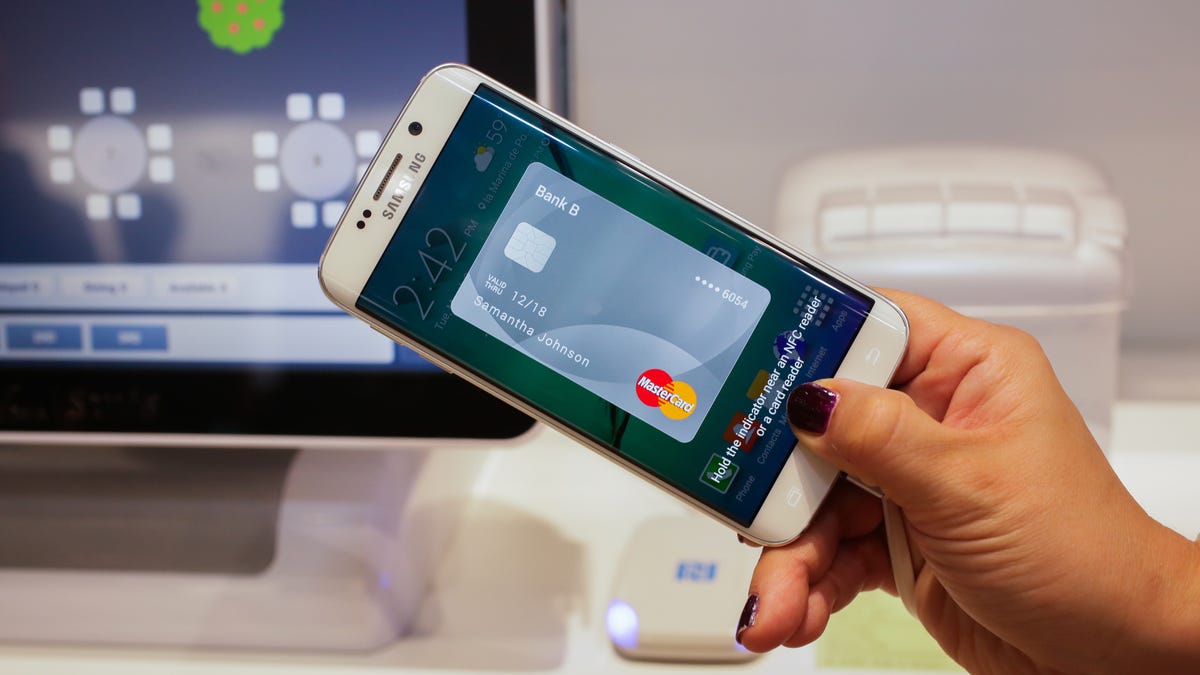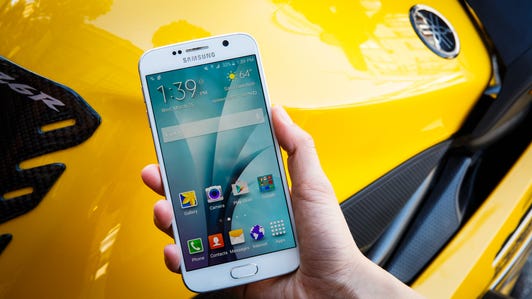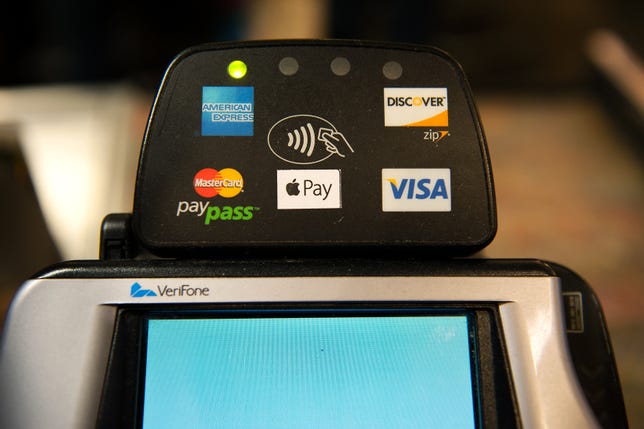
Sarah Tew/CNET
BARCELONA — Samsung wants its new phones to become your wallet, yesterday unveiling its Samsung Pay mobile payments system, which is going to arrive on its Galaxy S6 and S6 Edge smartphones .
Samsung has said its payment tech will be coming to Europe following a roll-out in the US and South Korea in the summer, but how will Samsung’s scheme work in European countries, and is it likely to take off?
How Samsung Pay works
Samsung Pay uses wireless technology embedded inside Samsung’s newest smartphones to interact with tills when you buy things from shops. Once you’ve added a payment card to your smartphone, you’ll be able to pay for things by tapping your phone against the till, authenticating the transaction using the phone’s fingerprint scanner.
Samsung says it won’t store any personal account numbers on your phone, instead using a secure token with random information to make payments, in the same way that Apple Pay does.
Samsung Pay differs from Apple’s tech in one significant way, however. Apple Pay uses a system called near-field communication (NFC) to make those wireless transactions. Samsung, however, has two technologies on the go at the same time. One is NFC, and the other is MST, which stands for magnetic secure transmission. Samsung has this tech courtesy of a company called LoopPay that it bought recently, which lets you conduct a wireless payment between your phone and any till that has a mag-stripe reader.


Now playing:
Watch this:
Wireless payments come to the Galaxy phones
1:15
Samsung has less advantage in Europe
The power to use both NFC and mag-stripes means that Samsung Pay will work with pretty much all tills. As Gilles Ubaghs, senior analyst of financial services technology at Ovum explains, “Anywhere PayPass or payWave (MasterCard and Visa’s contactless payment systems) is accepted will work with Samsung Pay, as on the NFC side they all work to the same specifications. Where there is no contactless, Samsung Pay will work on nearly any machine that has a mag stripe reader.”
Fully metal Samsung Galaxy S6 looks sharp (pictures)






This is great for Samsung in the US, where loads of tills still only have mag-stripe readers, but Samsung’s advantage in the UK and Europe is dramatically lessened.
“Samsung can in theory be used more broadly due to the magstripe side of things, but in Europe the magstripe is really being forgotten about as a technology compared to the US, and is pretty removed in most markets,” Ubaghs said. “Even finding the card swipe portion of a point of sale device is likely to be fiddly and unclear to many consumers in Europe who are out of the habit, and I can only imagine what staff at the till will make of consumers waving their phones about their registers if they aren’t sure what’s going on.”
With NFC and MST, Samsung’s payment tech is comprehensive — but the obstacles that stand between Samsung and mobile payment domination aren’t merely technical, especially in Europe where paying for items with a tap is no longer a novelty. Why pay with a Samsung smartphone when it’s no easier than using a card?


Bryan Thomas, Getty Images
“Consumer apathy is still the biggest stumbling block,” Ubaghs notes. “Being able to enact a transaction at the point of sale is not really a new phenomenon, even though the steps involved in doing so are improving and becoming smoother.”
Martin Zander, senior vice-president of PR and Communications at mobile payments firm Yapital, said, “Both [Apple Pay and Samsung Pay] merely replace an existing payment method. Without other interesting features for the end users (such as loyalty schemes), it’s hard to see the added value.”
So will Samsung Pay take off?
Despite the rumoured imminent launch of Apple Pay outside the US stirring up thoughts of a major mobile payments battle, it could be that both Samsung and Apple are able to succeed when it comes to mobile payments. One doesn’t have to fail for the other to succeed, and ultimately both could offer an extra payment mechanism for their European customers.
“Very, very few consumers will have to choose between Apple Pay or Samsung Pay, and realistically no one is going to pick their device for just that feature,” Ubaghs said. “There is a very strong potential for both of these platforms to prove successful and cater to their respective patches of the mobile market (and any bank or retailer could easily support both).”
Ultimately, it seems likely that Samsung Pay will certainly work in Europe from a technical standpoint, and could be an interesting option for owners of Samsung phones who like the idea of making payments by tapping from their phones. If that sounds exciting to you, then feel free to get excited about Samsung Pay hitting Europe in months to come. If, on the other hand, you’re perfectly happy typing in your PIN code or tapping a contactless card, the introduction of Samsung’s system is unlikely to mess with your routine.



